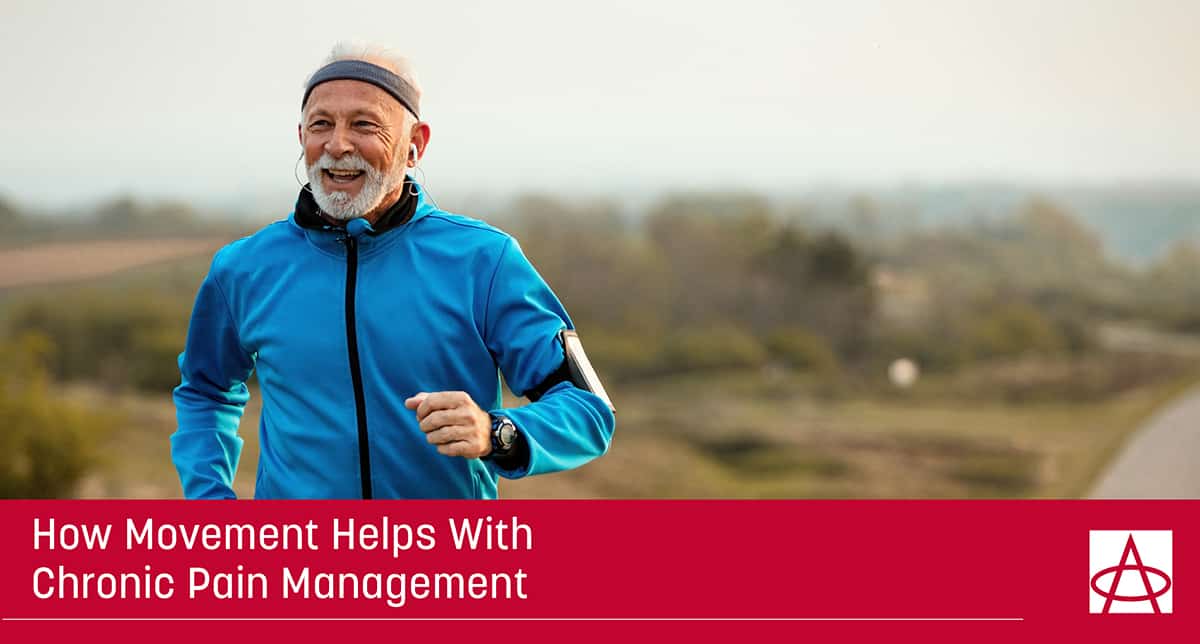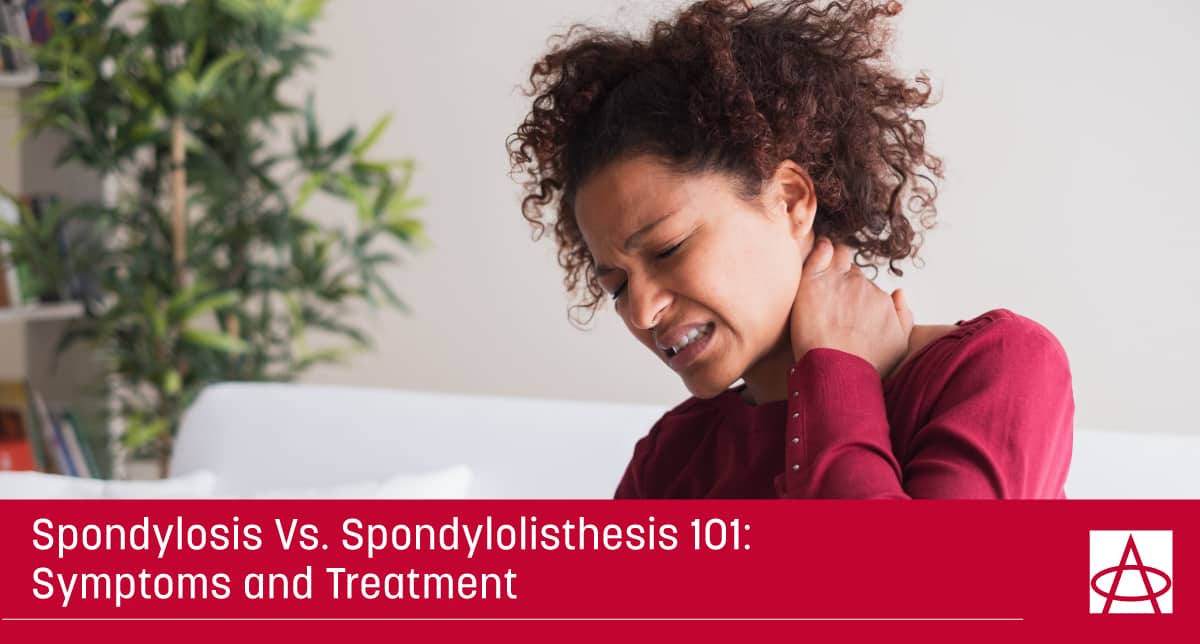
How Movement Helps With Chronic Pain Management
By Jeffrey Higginbotham, M.D.
Years ago, a study was done where scientists stripped all of the muscles off of a cadaver spine to test how much weight the human spine could really handle just with the ligaments and joints alone. How much weight did it take to break the spine? Just 10 pounds. That means that without the muscles, the spine can barely support our bodies.
Knowing the importance of the muscular system shows us a bigger picture: that maintaining our muscles is one of the most important parts of ensuring that our bodies are given everything they need to give us a good quality of life. And how do we help care for our muscles?
Exercise.
Though it’s a simple solution, many patients never get to the point of total high quality life because they don’t want to commit to exercising. I’ll never stop pushing, but ultimately, there are some people who simply don’t want to commit.
The truth is, there’s a tricky cycle when it comes to chronic pain management and exercise that I see all the time, called the “fear-avoidance pattern.” Whether suffering from knee pain, back pain, or neck pain, many patients’ natural tendencies are wanting to stop moving, because of the fear of moving. Their fear of feeling even more pain is more scary than getting over the hump of exercising and creating lasting and long-term change.
But the thing is, you have to get to the top of the mountain before you can start feeling the ease of going downhill. In other words, you have to push yourself a little bit before you’ll reap the benefits of feeling long-term relief. Once that mountaintop is hit, you’ll feel the momentum and inertia to help you get down the hill, but only after getting to the top.
Related: The APC Difference: Our Multidisciplinary Approach to Patient Care
The science behind movement and chronic pain
There are countless studies to show the importance of movement when a patient is experiencing chronic pain. Similar to my example at the beginning, the skeletal structure requires our muscles to be intact in order to stay stable. Without them, we’d fall apart after 10 pounds of weight.
Our spines aren’t what keep us together– it’s our muscles. So by strengthening them through movement and exercise, they’re becoming more able to keep us stable.
Cardiovascular endurance also helps our heart and lungs process oxygen better, allowing us to go further and longer as our endurance improves. There’s also our endorphins, which is what elevates when we’re exercising (hence “runner’s high”), literally lifting our moods and making us happier. This helps combat the mental downs that often accompany chronic pain.
So, the proof is definitely in the pudding that movement is beneficial for most chronic pain management. But how do we find out what will work and what won’t work when we move? What if you’re not a marathon runner, a 5am club biker, or a crossfit champion?
How walking has helped our patients
I wake up and go running every day. It’s what lifts my mood, starts my day, and keeps my body strong. But I know that many of my patients aren’t ready to do the same. So years ago, I started going to the park every Wednesday afternoon around 6 or 6:30pm to meet with patients just to walk, encouraging them to exercise no matter where they were in their pain care journey.
I had people with walkers, people who had been suffering from intense pain, and people who were typically immobile come just to get some movement in, and the results were amazing.
I saw patients who struggled even getting through the “short loop” who, in a matter of months, were already onto the long one with ease. I saw patients enjoying each other’s company, spending time with each other and sometimes even forgetting that they were exercising.
The best part? Even though I stopped the program a while ago, I still see the same group of ladies who became friends when they first started walking together over 10 years ago!
But our initiative at APC didn’t stop after that. Now, we have Walk with a Doc, which is an international organization that was initially created by a physician several years ago to help his patients get more active. Now, it’s expanded into a nonprofit, with many branches including the one here at APC.
How to start exercising with chronic pain… even if you aren’t motivated
In my opinion, “inertia” is at the core of everything; a body in motion will stay in motion, and a body at rest will stay at rest. And more often than not, psychological aspects are holding patients back more than physical aspects.
I’ll plug my favorite book of all time, Atomic Habits by James Clear, because there are fantastic tools in it to help you get motivated to create long-lasting habits. In this book is one idea of “habit-stacking,” which means pairing two things seamlessly together in order to form a lasting habit.
This applies to every walk of life (no pun intended), no matter how able or unable you are to perform various types of exercises. For patients who are nearly immobile, simply walking to the mailbox every day might be all they can do. For others, walking down the block and back is enough to put on a sweat. But every time they do exercise, they’re able to push themselves even further, strengthen their muscles, and build their stamina. Some movement is better than no movement.
Related: How We at APC Address Mental Health and Chronic Pain Together
Let’s go back to “habit-stacking.” If your doctor told you that you have to start walking for 30 minutes a day, but you’d rather just watch Golden Girls, then “habit-stacking” would be rewarding yourself with watching the show after you’re done exercising. Or better yet, buy a treadmill, put it in front of your television, and walk on it for a whole episode. By pairing something difficult– exercise– with something enjoyable– Golden Girls, you’re building a habit that always comes with your enjoyable action. This is because more often than not, your reasoning for not exercising isn’t physical– it’s psychological.
Another tool I help patients with is “baby steps.” You can’t learn how to walk if you don’t know how to crawl, first. Similarly with exercising with chronic pain, it’s important to find what works for you and take incremental steps to the next goal. Just like the patients I used to walk with who used to struggle and are now walking around the long loop with ease, it takes regular practice, and patience with yourself to start slowly.
—-
We take movement and exercising seriously here at APC, because we believe that you have control over a lot more than you think. While we have the tools to help you improve various aspects of it, it’s ultimately up to the patient to implement or not implement daily routines that could change their quality of life.
If you’re experiencing chronic pain, but are having trouble feeling motivated to start, give us a call at our offices so we can help.
Disclaimer: please speak with your doctor or physician before trying a new exercise regimen so you can understand the best solution for you.
As always: pain is inevitable, but suffering is optional.






